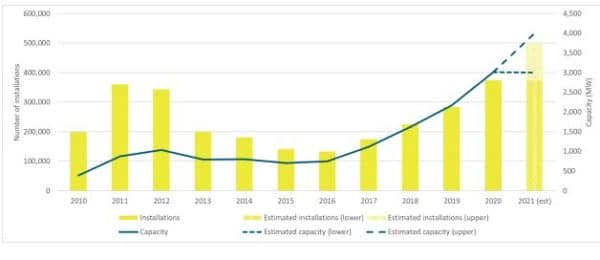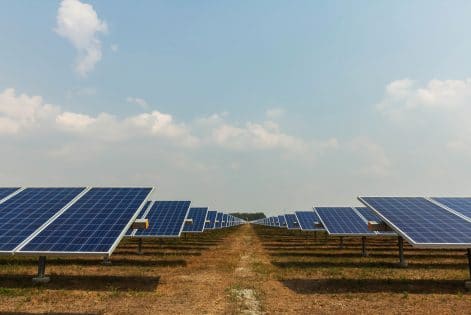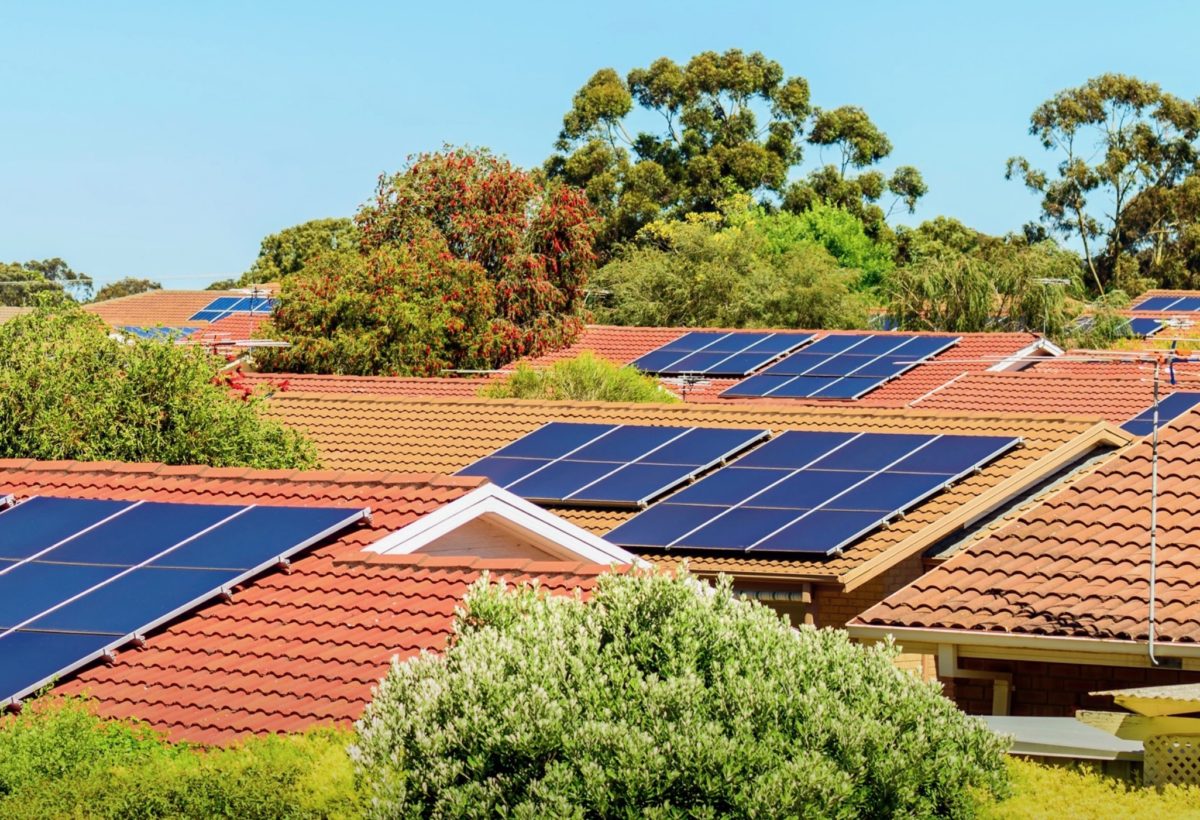The Regulator’s latest Quarterly Carbon Market Report confirms 7 GW of new renewable energy capacity was installed in Australia last year, up 11% on 2019 levels and well above the CER’s original estimate of 6.3 GW.
The December Quarter 2020 Quarterly Carbon Market Report released this week shows that by the end of 2020 Australia had installed 32 GW of new renewable energy capacity – 13 GW of rooftop solar under the Small-scale Renewable Energy Scheme (SRES) and 19 GW of large-scale capacity.
The record rollout included a staggering 3 GW of rooftop solar PV in 2020, a 40% increase on the 2.2 GW installed nationally in 2019.
“Sustained low technology costs, increased work-from-home arrangements and a shift in household spending to home improvements during Covid-19 played a key role in the increase of rooftop solar PV systems under the SRES,” CER chair David Parker said.
The CER said installed rooftop solar PV capacity has increased by an average of 38% year on year for the past three years and early signs point to another record year in 2021.
An impressive 950 MW of rooftop solar PV capacity was installed in the final quarter of last year, up 27% up on the previous high (760 MW) set the quarter before, and growth has continued to accelerate.

Image: CER
The CER expects between 3 GW and 4 GW of rooftop solar PV to be installed this year with growth up 30% in January 2021 compared to the same time last year.
The rollout of large-scale solar PV projects is also expected to continue at pace after 4 GW was accredited nationally in 2020, well above the CER’s original prediction of 3.4 GW.
This increase was due in part to several utility-scale power stations that were expected to come online in 2021, including the 200 MW Wellington Solar Farm and the 227 MW Collector Wind Farm, being accredited earlier than expected.
“Several utility-scale power stations commencing generation and being accredited towards the end of 2020 rather than in early 2021 were the primary drivers for the increase,” Parker said.

Image: Lightsource bp
The report also confirms Australia met its LRET of 33,000 GWh. The CER expects eligible generation could reach 40,000 GWh in 2021.
Australia has added on average more than 6 GW of renewable capacity each year since 2018 and the level of investment is expected to continue through to 2022.
“It comes as no surprise that total renewable generation in the National Electricity Market (NEM) has climbed to over 30% at the end of 2020, up 5% compared to the previous year.” Parker said.
2020 also saw a record 16 million Australian carbon credit units (ACCUs) issued owing to a 25% increase in crediting for savanna burning and 17% increase in crediting for vegetation projects.
“This was an 8% rise from 2019, a trend we are expecting to continue in 2021.” Parker said.
Emissions reduction from schemes administered by the CER reached 53 million tonnes of carbon dioxide equivalent in 2020 and is expected to increase to 57 million tonnes in 2021.
This content is protected by copyright and may not be reused. If you want to cooperate with us and would like to reuse some of our content, please contact: editors@pv-magazine.com.









4 comments
By submitting this form you agree to pv magazine using your data for the purposes of publishing your comment.
Your personal data will only be disclosed or otherwise transmitted to third parties for the purposes of spam filtering or if this is necessary for technical maintenance of the website. Any other transfer to third parties will not take place unless this is justified on the basis of applicable data protection regulations or if pv magazine is legally obliged to do so.
You may revoke this consent at any time with effect for the future, in which case your personal data will be deleted immediately. Otherwise, your data will be deleted if pv magazine has processed your request or the purpose of data storage is fulfilled.
Further information on data privacy can be found in our Data Protection Policy.